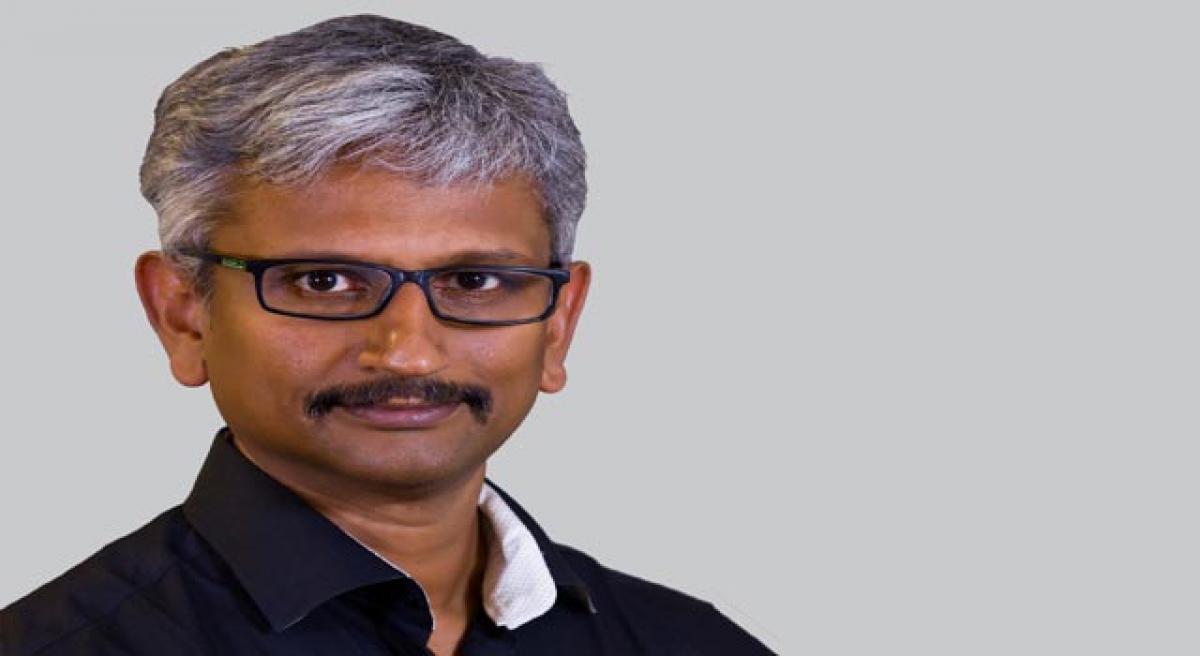Live
- Allari Naresh’s ‘Aa Okkati Adakku’ trailer promises hilarious family entertainment
- Hanuman Jayanthi special: Prasanth Varma unveils new poster of ‘Jai Hanuman’
- Chiranjeevi’s ‘Vishwambhara’ sets the bar high with massive interval stunt sequence
- State-wide bandh by BJP
- Pawan Kalyan Files Nomination for Pithapuram, says NDA will clinch victory
- Youths assault driver alleging illegal cattle transportation
- SC, STs to call the shots, JD(S)-BJP has an edge
- Neha murder case to be handed over to CID
- Setback for Cong as polarisation of Lingayat votes may help BJP
- Huge protest rally in Haveri
Just In

The Virtual Reality (VR) technology is gaining prominence by the day. And watching movies in real time on VR is an experience altogether. VR typically refers to computer technologies that use virtual reality headsets to generate the realistic images, sounds and other sensations that replicate a real environment or create an imaginary setting.
The Virtual Reality (VR) technology is gaining prominence by the day. And watching movies in real time on VR is an experience altogether. VR typically refers to computer technologies that use virtual reality headsets to generate the realistic images, sounds and other sensations that replicate a real environment or create an imaginary setting.
‘Baahubali-The Conclusion’ becomes the first movie in India to use this technology. Speaking to The Hans India, Raja Koduri, Senior Vice President and Chief Architect, Radeon Technologies Group shared the VR technology and more.
“The new VR camera ‘BB360’ is the world fastest 360-degree video stitching software. It provides real-time virtual reality preview and uses around 32 cameras. Advanced Micro Devices (AMD) created ‘Radeon Loom Software’, to enable rapid development of high-quality 360-degree video. A person who will use VR equipment will be able to ‘Look Around’ the artificial world and interact with features or items depicted in the headset.
These headsets are head-mounted goggles with a screen in front of the eyes,” said Raja Koduri. Speaking about Radeon Technologies Group collaboration with the ‘Baahubali’ team, Raja Koduri shared, “Our collaboration with Rajamouli, started after the ‘Eega’ movie. He executed the film very well with limited tools and resources. We did ‘Baahubali- The Beginning’ with him but it was just a step in our journey.
After the huge success of ‘Baahubali-1’, the range and budget of the movie was expanded. The tools that we used for ‘Baahubali-1’ were 10 times bigger than the tools used for ‘Eega’. Similarly, we used 10 times bigger tools for ‘Baahubali-2’ compared to ‘Baahubali-1’. For this movie, we created two trillion (2x1012) pixels which are rendered on computers. The technology that we used for ‘Baahubali-2’ did not exist last year. For this film, we created a ‘Silicon Chip’, which is provided by Vega Graphic Chip, AMD.”
Raja informed that VR technology can be used in video games, healthcare and clinical therapies, anxiety disorder treatment, pain management, military uses, space training, medical training, fine arts, engineering, archaeology, music concerts, marketing and education. “Generally, VR technology requires Petabytes of data. The work which takes 10 hours to complete in VFX (Visual Effects) and it will be completed in less than 10 milliseconds in VR.
Today, we are bringing to market a first-of-a-kind experience for millions of film enthusiasts in India and around the world. Following the success of ‘Baahubali: The Beginning’, we are once again collaborating with leading filmmakers to bring stunning visuals to life. We are extending the movie experience by and bringing related Virtual Reality entertainment to the world,” he shared.
About the challenges of VR technology, Raja Koduri said, “A 360-degree video is recorded by using two to 32 individual cameras. If we use more cameras then we get higher resolution. However, combining the output of multiple camera views into a single seamless requires rectangular projection and it is incredibly complex.
The output of all these cameras must be stitched together in software before it can be edited or viewed. In addition, lens distortion must be corrected, parallax must be considered, and the exposure differences between each camera’s output has to be blended to produce the final balanced image,” he concluded.
By V Sateesh Reddy

© 2024 Hyderabad Media House Limited/The Hans India. All rights reserved. Powered by hocalwire.com







